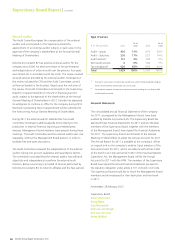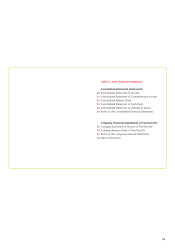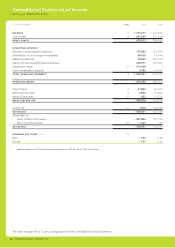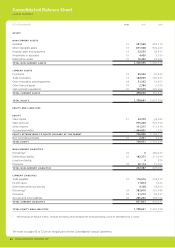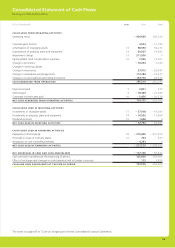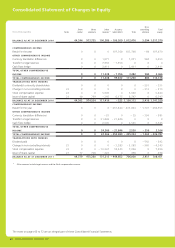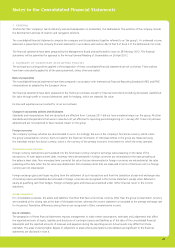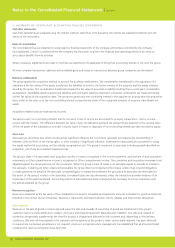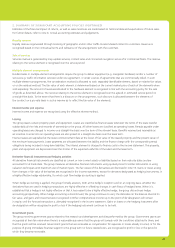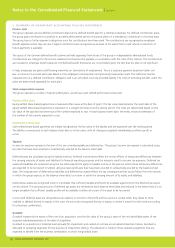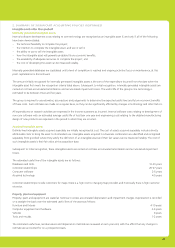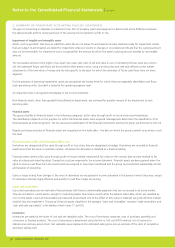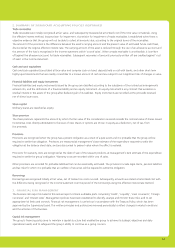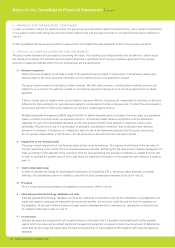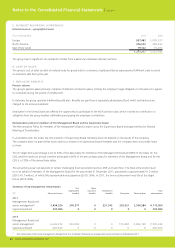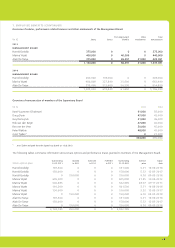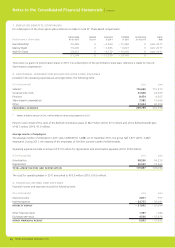TomTom 2011 Annual Report Download - page 48
Download and view the complete annual report
Please find page 48 of the 2011 TomTom annual report below. You can navigate through the pages in the report by either clicking on the pages listed below, or by using the keyword search tool below to find specific information within the annual report.
TomTom Annual Report and Accounts 2011
46
Notes to the Consolidated Financial Statements | continued
2. SUMMARY OF SIGNIFICANT ACCOUNTING POLICIES (CONTINUED)
Cash fl ow statements
Cash fl ow statements are prepared using the indirect method. Cash fl ows from derivative instruments are classifi ed consistent with the
nature of the instrument.
Basis of consolidation
The consolidated fi nancial statements incorporate the fi nancial statements of the company and entities controlled by the company
(its subsidiaries). Control is achieved where the company has the power to govern the fi nancial and operating policies of an entity so
as to obtain benefi ts from its activities.
Where necessary, adjustments are made to the fi nancial statements of subsidiaries to bring their accounting policies in line with the group.
All inter-company transactions, balances and unrealised gains and losses on transactions between group companies are eliminated.
Business combinations
The group applies the acquisition method to account for business combinations. The consideration transferred for the acquisition of a
subsidiary is the fair values of the assets transferred, the liabilities incurred to the former owners of the acquiree and the equity interests
issued by the group. The consideration transferred includes the fair value of any asset or liability resulting from a contingent consideration
arrangement. Identifi able assets acquired and liabilities and contingent liabilities assumed in a business combination are measured initially
at their fair values at the acquisition date. The group recognises any non-controlling interest in the acquiree on an acquisition-by-acquisition
basis, either at fair value or at the non-controlling interest’s proportionate share of the recognised amounts of acquiree’s identifi able net
assets.
Acquisition-related costs are expensed as incurred.
Transactions with non-controlling interests that do not result in loss of control are accounted for as equity transactions – that is, as trans-
actions
with the owners. The difference between fair value of any consideration paid and the relevant share acquired or the carrying value
of the net assets of the subsidiary is recorded in equity. Gains or losses on disposals of non-controlling interests are also recorded in equity.
Associates
Associates are all entities over which the group has signifi cant infl uence but not control, generally accompanying a shareholding of
between 20% and 50% of the voting rights, or other evidence of signifi cant infl uence. Investments in associates are accounted for using
the equity method of accounting, and are initially recognised at cost. The group’s investment in associates includes goodwill identifi ed on
acquisition, net of any accumulated impairment loss.
The group’s share of its associates’ post-acquisition profi ts or losses is recognised in the income statement, and its share of post-acquisition
movements in Other comprehensive income is recognised in Other comprehensive income. The cumulative post-acquisition movements are
adjusted against the carrying amount of the investment. When the group’s share of losses in an associate equals or exceeds its interest in
the associate, including any other unsecured receivables, the group does not recognise further losses, unless it has incurred obligations
or made payments on behalf of the associate. Unrealised gains on transactions between the group and its associates are eliminated to
the extent of the group’s interest in the associates. Unrealised losses are also eliminated, unless the transaction provides evidence of an
impairment of the asset transferred. Accounting policies of associates have been changed where necessary to ensure consistency with
the policies adopted by the group.
Revenue recognition
Revenue is measured as the fair value of the consideration received or receivable and represents amounts receivable for goods and services
provided in the normal course of business. Revenue is reduced for estimated customer returns, rebates and other similar allowances.
Sale of goods
Revenue on the sale of goods is only recognised when the risks and rewards of ownership of goods are transferred to the group’s
customers (which include distributors, retailers, end-users and Original Equipment Manufacturers (‘OEMs’)). The risks and rewards of
ownership are generally transferred at the time the product is shipped and delivered to the customer and, depending on the delivery
conditions, title and risk have passed to the customer and acceptance of the product, when contractually required, has been obtained.
In cases where contractual acceptance is not required, revenue is recognised when management has established that all aforementioned
conditions for revenue recognition have been met.




